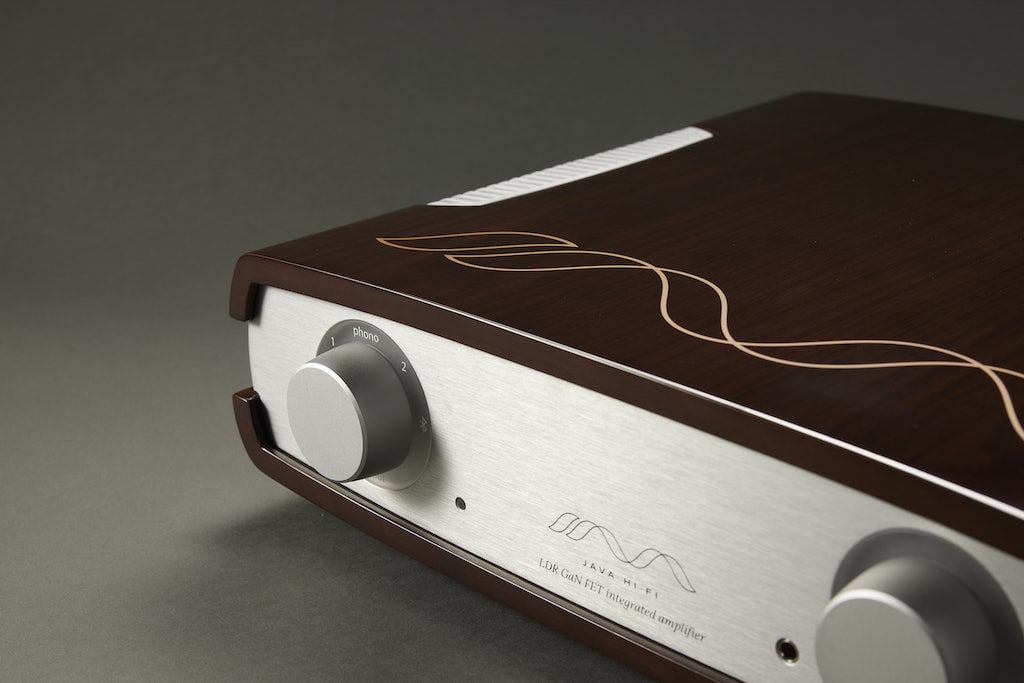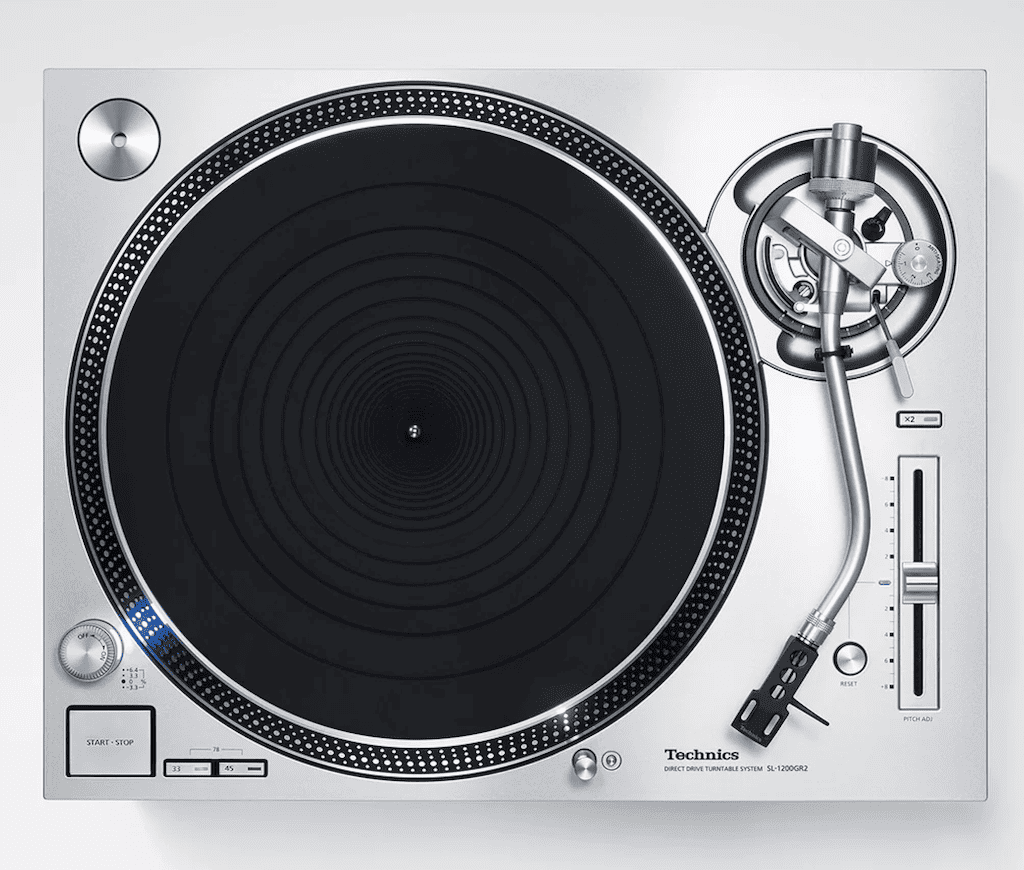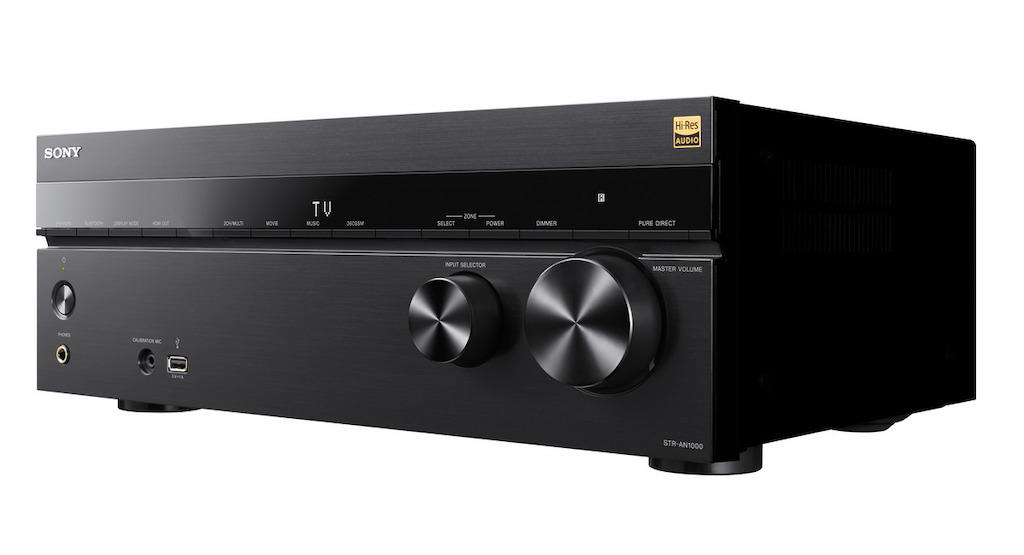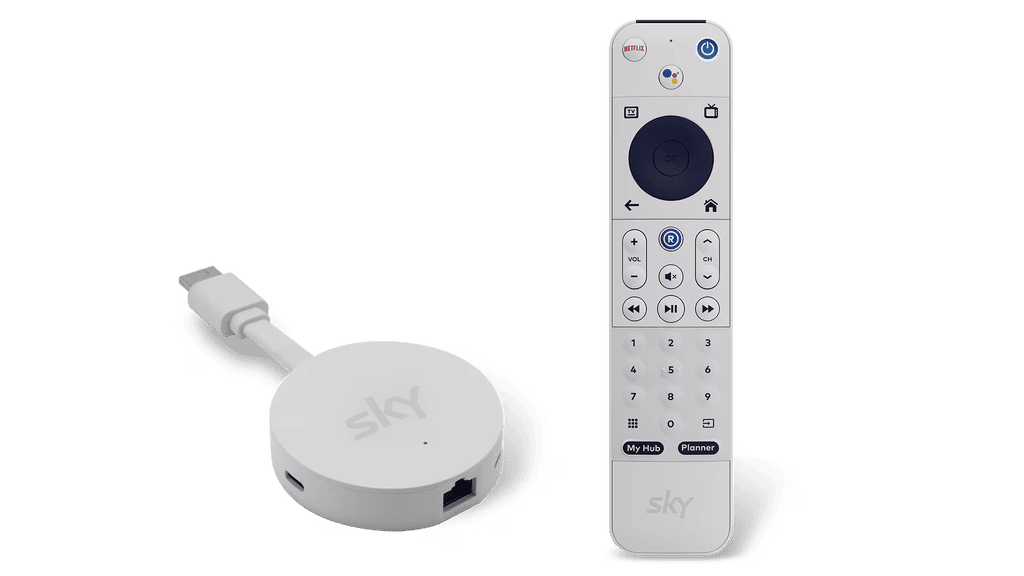Summary
The Wand 14-4 Master Turntable
Reviewer ANDREW BAKER liked the last The Wand turntable so much he bought it. Now there’s a ‘Master’ version to contemplate.
$8575 (excluding tonearm) Approximately $11,750 with 10in Master arm

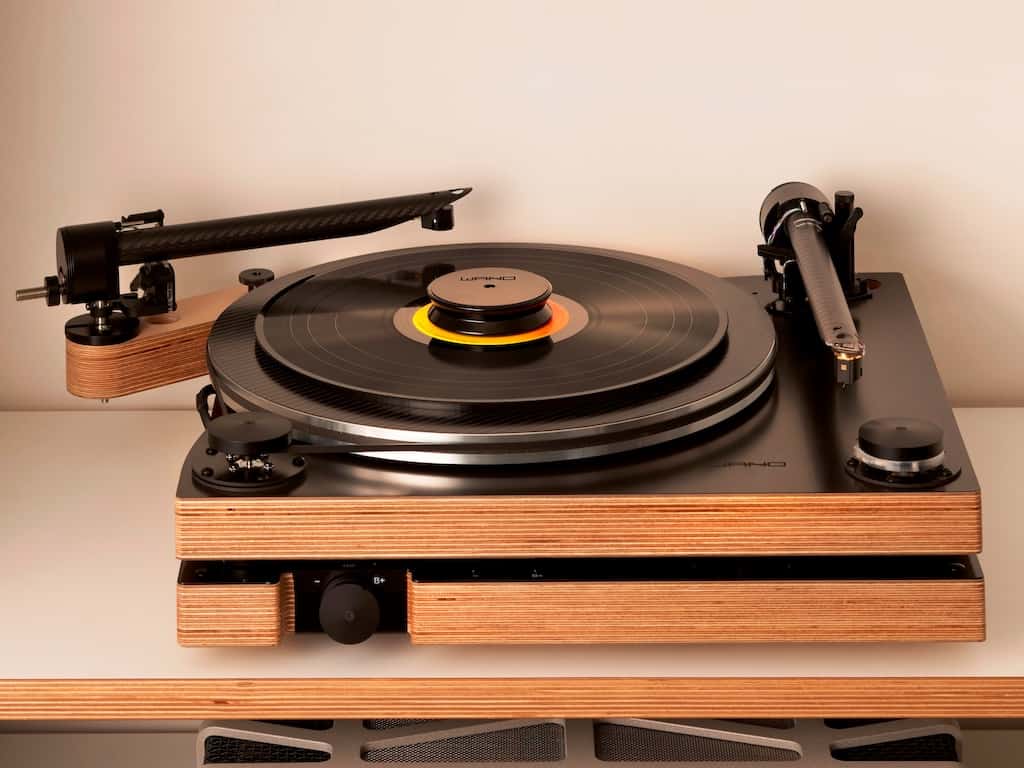 When Simon Brown, creator of the Wand tonearms and turntables, asked me if I’d like to review the latest version of his 14-4 turntable, it required very few brain cells to swiftly reply: “Yes please!” This ‘Master’ version of the 14-4 was successfully shown in prototype form at the 2023 Munich High-End Audio Show in the room he shared with New Yorker John Devore and his Devore Fidelity speaker brand.
When Simon Brown, creator of the Wand tonearms and turntables, asked me if I’d like to review the latest version of his 14-4 turntable, it required very few brain cells to swiftly reply: “Yes please!” This ‘Master’ version of the 14-4 was successfully shown in prototype form at the 2023 Munich High-End Audio Show in the room he shared with New Yorker John Devore and his Devore Fidelity speaker brand.
I fell head over heels for the 14-4 and 12-inch Master tonearm when I reviewed it a couple of years ago, so much so that I bought (yes: bought) the review unit. For those in need of a refresh, the 14-4 consists of a 3.5cm thick layered German ply chassis – with strategically placed holes and cut-offs for resonance control – featuring a lovely matte black top coating and an oversized 14-inch aluminium platter in four layers – hence the name 14-4.
The top layer of the platter is 12-inch acrylic and the bottom three 14-inch aluminium sandwich with black acrylic between. The platter is belt-driven using electronic speed control via an on-board but isolated DC motor which uses an electronic brake for fast stopping.
The 14-4 Turntable can accommodate the full range of Wand Tonearm lengths and there are options for mounting other manufacturers’ arms. The 14-4 looks like a piece of art and – befitting its high-end price point – sounds spectacular.
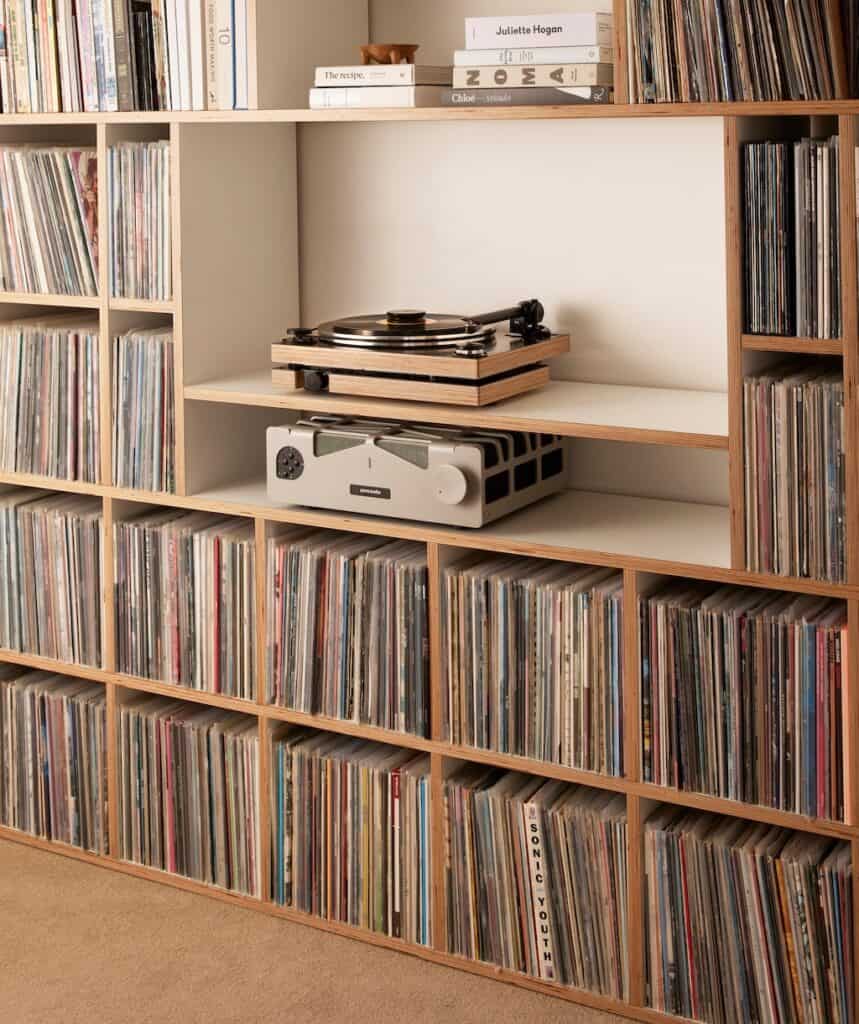 Not long after it went on the market, Simon and his Design Build Listen team released a separate power supply unit for the turntable, the Wand EV. This is based around a battery pack which allows users to switch between mains and battery power. You can also run both the turntable and Wand EQ Phonostage from the power supply with the use of the supplied Y-cable.
Not long after it went on the market, Simon and his Design Build Listen team released a separate power supply unit for the turntable, the Wand EV. This is based around a battery pack which allows users to switch between mains and battery power. You can also run both the turntable and Wand EQ Phonostage from the power supply with the use of the supplied Y-cable.
Where the original EV was only a little larger than the diminutive EQ phono stage, this Master version of the battery/mains power supply is housed in a full-sized chassis or base, which nicely matches the plinth of the turntable. As a result, the 14-4 Master Turntable is now effectively a 2-level chassis, with the turntable plinth itself “floating” cleverly on top of the power supply layer by utilising the multi-axis stretched O-ring suspension units found in the feet of the original 14-4.
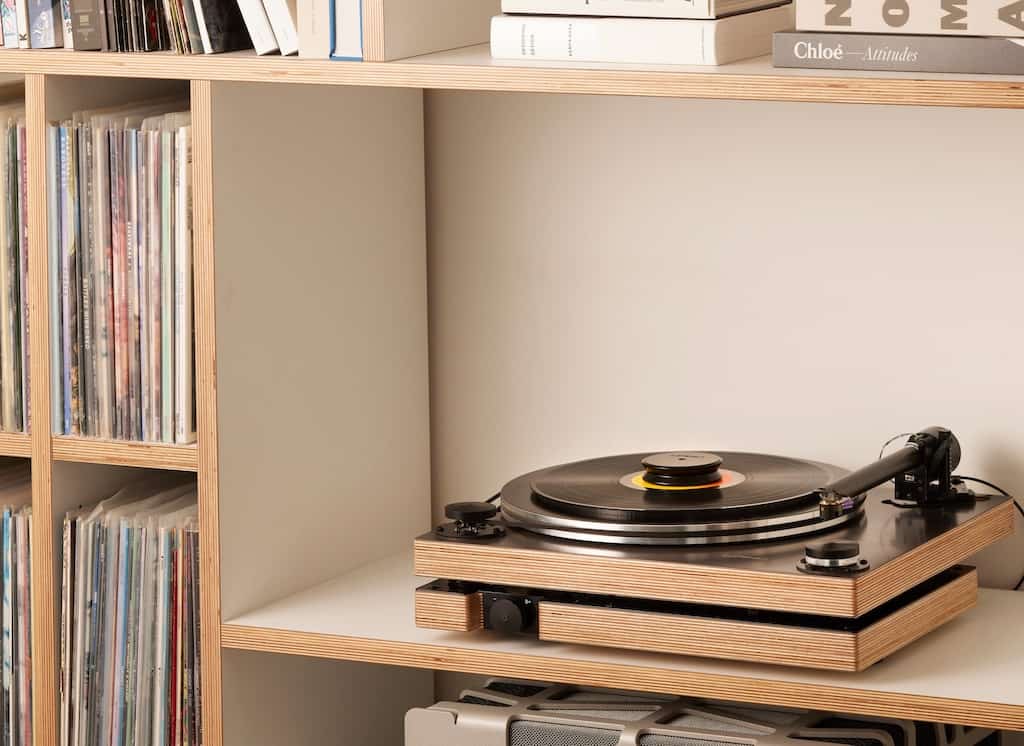 Where the 14-4 has its unique cutaway on the left side, the Master base power supply has a cutaway on the right. This is mostly to accommodate the tonearm slot and the tonearm’s subsequent undercarriage, but the way the plinth and base come together is visually appealing. Included with the Master is a mounting facility for a second tonearm or, if preferred, this can be used for attaching a turntable lamp instead. Actually, Simon emphasises that it is a secondary tonearm, rather than “second” as it doesn’t quite share the isolation benefits of the primary arm. The top surface of both the platter and the plinth now have an attractive carbon silk mat coating. (Originally Simon was going to call this the 14-5 due to that extra layer but decided to go with “Master” instead.) In fact, most of the silver from the original has been replaced with this black finish. Last but not least, the entire 2-level turntable sits on adjustable IsoAcoustic Gaia isolator feet for increased resonance control and stability.
Where the 14-4 has its unique cutaway on the left side, the Master base power supply has a cutaway on the right. This is mostly to accommodate the tonearm slot and the tonearm’s subsequent undercarriage, but the way the plinth and base come together is visually appealing. Included with the Master is a mounting facility for a second tonearm or, if preferred, this can be used for attaching a turntable lamp instead. Actually, Simon emphasises that it is a secondary tonearm, rather than “second” as it doesn’t quite share the isolation benefits of the primary arm. The top surface of both the platter and the plinth now have an attractive carbon silk mat coating. (Originally Simon was going to call this the 14-5 due to that extra layer but decided to go with “Master” instead.) In fact, most of the silver from the original has been replaced with this black finish. Last but not least, the entire 2-level turntable sits on adjustable IsoAcoustic Gaia isolator feet for increased resonance control and stability.
Would you like to support our mission to bring intelligence, insight and great writing to entertainment journalism? Help to pay for the coffee that keeps our brains working and fingers typing just for you. Witchdoctor, entertainment for grownups. Riveting writing on music, tech, hi-fi, music, film, TV and other cool stuff. Your one-off (or monthly) $5 or $10 donation will support Witchdoctor.co.nz. and help us keep producing quality content. It’s really easy to donate, just click the ‘Become a supporter’ button below.
Incidentally, being released along with the 14-4 Master is the new Wand Series B tonearm. This new version of the venerable Wand tonearm has been refined for easier setup and comes in matte black to match the new 14-4 finish – marking a change to black across the board. The Series B features a new rear weight system and mounting assembly, and a revised plastic protractor is included for initial setup too.
If you already own a 14-4 Turntable, you would be correct in thinking you can easily upgrade. This can be accomplished by removing the feet and attaching the turntable to the separately available Wand Master Iso Base (the official name) via the aforementioned suspension units. The price for the Iso Base on its own is $2875, which makes the Master turntable the same price as buying a 14-4 and adding the base later. There is also a cheaper upgrade option in which an Iso-kit (a smaller base unit with Gaia feet attached) can be purchased along with the original smaller housing Wand EV. Simon told me the Master unit adds an extra 6kg and gives better shock isolation (vibration and movement, not electric shock) than the Iso-kit.
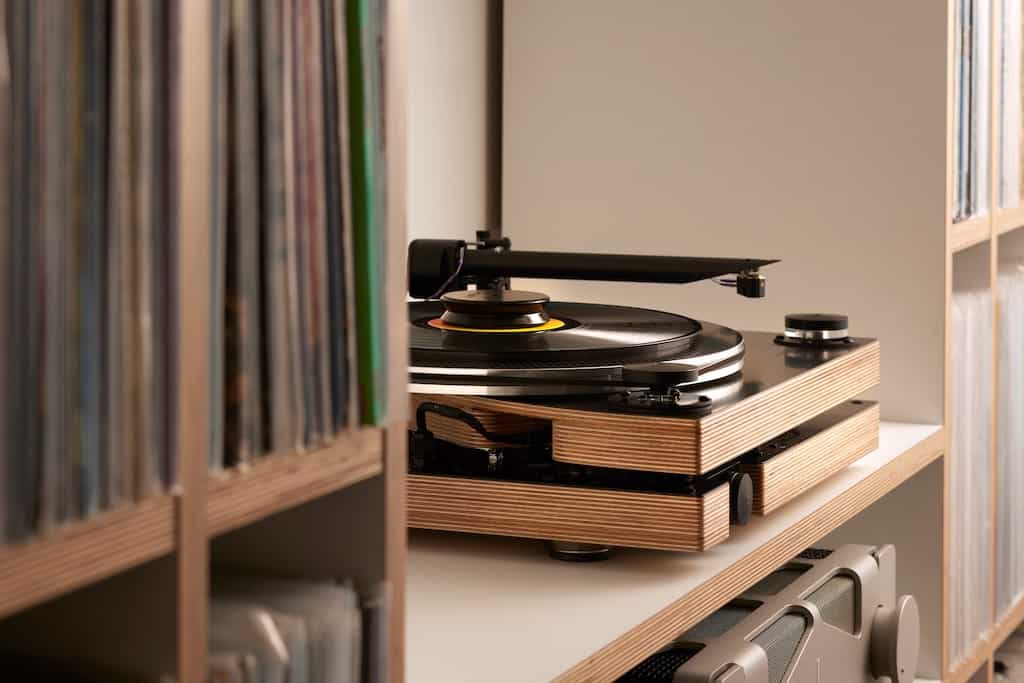 Setup and Listening
Setup and Listening
Along with a user manual which features easy-to-follow step-by-step instructions, a video of Simon going through the set-up procedure can be found online (a link is provided). However, don’t think you’re going to have this up and running in a mere matter of minutes. Setting up and positioning the bare turntable itself is relatively easy but it’s the tonearm that will require patience, time, a little skill and, ideally, some expert assistance if you’re short on any of the former. I arrogantly thought that because I had already managed to successfully set up my own 14-4 (many months ago now, though often tinkering and fine-tuning thanks to much cartridge swapping) I would breeze through the setup of the Master without needing to re-read the manual. How wrong I was! I rapidly got myself into quite the pickle. Do (re)read the instructions and do (re)watch the video. And do take your time because the results are very much worthwhile. All the tools you will need are supplied, including the spindle-to-pivot measuring tool, Allen keys, cartridge mounting hardware, et cetera. Anyway, I got there in the end, having swapped my 12-inch Master tonearm to the new turntable and fitted it with my EMT TSD15n low output MC cartridge running through my Wand EQ phono stage. It goes without saying that setting up your turntable and cartridge precisely is the first step to consider long before attempting to come up with mods or upgrades.
How to make an already great turntable even better? In my opinion, the 14-4 Turntable was already well-qualified in the vibration control department. This was no afterthought, rather it is part of the design. A battery-powered turntable is a cool – perhaps even novel – idea. Sonically speaking, any improvements or differences, on paper at least, are surely likely to be subtle only. I’ve heard of people upgrading their turntable’s power cable and claiming improvements in the quality of sound. That might seem a hard one to swallow but if someone feels there are benefits from such things, I’m not going to argue. However, I might argue that when using battery power for something directly in the signal chain – a phono stage for instance – you’re most likely to notice sonic benefits thanks to the removal of potentially noisy mains power. This was my experience in fact, albeit subtly, when using the EV to power my EQ phono stage – a bit more clarity, slightly improved dynamics and, perhaps most obviously, quieter noise floor.
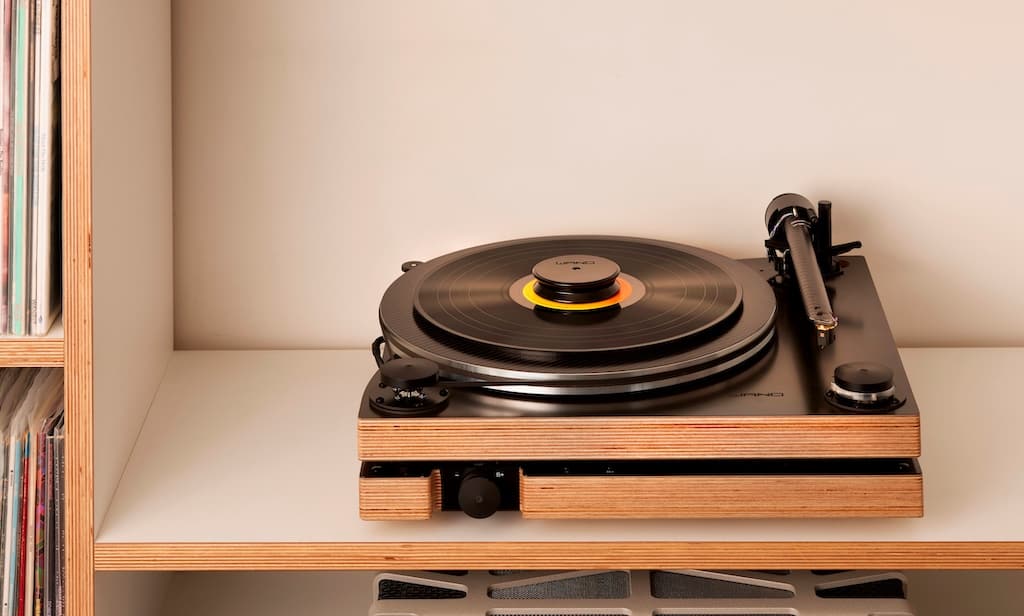 Stack a bunch of subtle improvements into one system, though, and you might get something ultimately more beneficial overall. For me, once a turntable is correctly set up, good noise and vibration control gives the biggest advantage for sound quality short of upgrading the cartridge or phono stage. I certainly expected the Gaia feet and the added mass of the Iso Base to have at least some small effect, but it was the battery aspect I found most intriguing. I wrote about the EV when it came out but focused mostly on the effects of using it with the EQ. So now I paid full attention in order to try and hear anything that driving the turntable motor with a battery might do.
Stack a bunch of subtle improvements into one system, though, and you might get something ultimately more beneficial overall. For me, once a turntable is correctly set up, good noise and vibration control gives the biggest advantage for sound quality short of upgrading the cartridge or phono stage. I certainly expected the Gaia feet and the added mass of the Iso Base to have at least some small effect, but it was the battery aspect I found most intriguing. I wrote about the EV when it came out but focused mostly on the effects of using it with the EQ. So now I paid full attention in order to try and hear anything that driving the turntable motor with a battery might do.
I started proceedings listening to Wall Of Eyes (2024, XL Recordings), the excellent new album from The Smile (Radiohead’s Thom Yorke and Jonny Greenwood with Tom Skinner on drums) which has been on high rotation at Baker Studios since its release. I did in fact quite quickly perceive a quieter background and clearer note edges and image definition than that which I had previously been accustomed to. There were certainly no downsides. The presentation was large – wall-to-wall and three-dimensional – with exceptional layering of sounds and placement perception of instruments. There was an abundance of tonal colour and micro and macro dynamics were simply splendid. The kick drum and lower bass notes were tight and propulsive, stopping in an instant without lingering or becoming woolly. Most of these qualities were to be expected but I did feel a heightened awareness of leading-edge clarity – making it easier to discern separate instruments in their own space, free from overlapping or blurring, and their associated natural timbres – and bass had a slightly more natural character.
The silence from which the first track on Pitch Black’s album Futureproof (1998/2021, Kog Transmissions) slowly builds is enticingly palpable. And here it seemed that little bit darker, allowing some of those little blips and effects more pin-sharp focus. It really is amazing how the background or noise floor can affect the music and it is something better heard than described. The way the synth-keyboard-derived dub chords, laced with reverb and delay, stabbed out of the silence before drifting slowly back into the abyss was pure joy. The low end had that little bit more definition – perhaps a touch deeper but most noticeably the edges of each note seemed more resolved. The Master succeeded in coaxing just that little bit more goodness from an already sublime-sounding recording.
An artist who commands silence is Aldous Harding. I have been in some rowdy, garrulous venues and as soon as she walked on and started performing, the entire room has gone dead silent. With her album Party (2017, Flying Nun), all the elements I had previously enjoyed – the delicate intricacies of Harding’s voice, the textures, tonal colours and shadings of both her voice and accompanying instruments – were again just that little bit more refined. Everything about the record sounded that extra bit more earthy, real and inviting, allowing me an immersive and emotional engagement with the music. I sort of imagined, listening to the record, that a noisy audience had suddenly shut their collective gobs in order to better appreciate the full impact of the performance.
The benefits of the Gaia feet and the increased mass of the base unit were evident – not huge differences, but noticeable. Comparing battery and mains power, however, proved the more difficult task. Saying out loud, especially in front of non-audiophiles, that there could possibly be a perceivable difference in sound when powering a turntable using battery or mains power, admittedly might sound a little fruity. Yet I found myself drawn to the battery option every time I listened to a record. It somehow sounded more “right”. A hint more transparency, detail, realism, maybe low-end presence – it was difficult to put my finger on, but I am no fool (mostly) and don’t tend to fall for or subscribe to the more outlandish of audiophile tricks and paraphernalia. Well, maybe sometimes. But I am not too proud to admit when something is bollocks, and bollocks this is not.
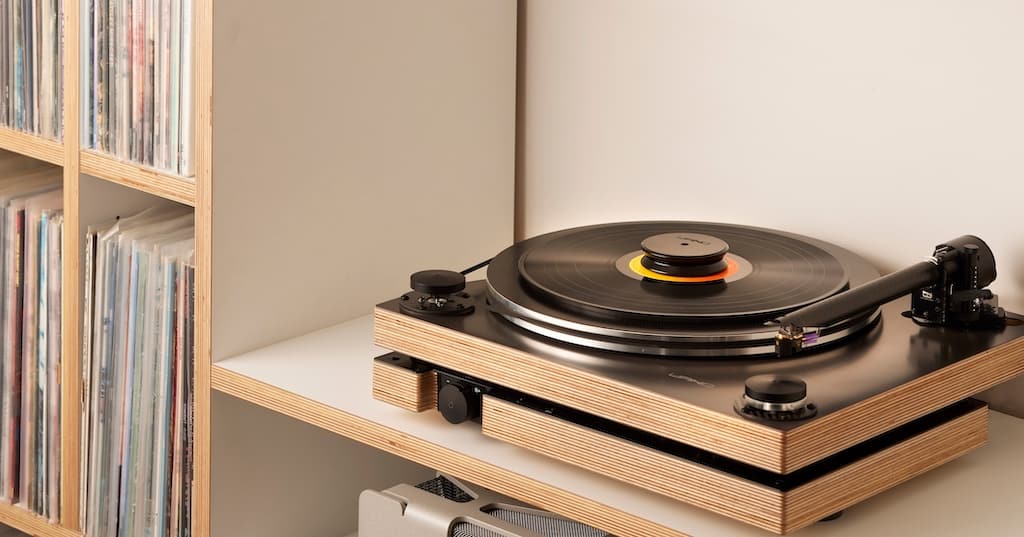 I asked Simon Brown for his thoughts on all this and received the following response (edited):
I asked Simon Brown for his thoughts on all this and received the following response (edited):
“The switch-mode power supply with the standard 14-4 is very much a pragmatic decision around helping sell products around the world. Despite my years of putting crazy big transformers and paralleled capacitor banks in my own DIY amps, I have become more convinced that modern switch mode can be good, especially the medical grade one we use in the 14-4. (This was the fourth one we tried).
“But there was still an opportunity to do better. We experimented with linear power supplies like the iFi Elite and S-Booster and are happy to endorse them as an upgrade for our products. But the battery supply steps it up to another level again. Given the noise floor with the standard 14-4 turntable is extremely low anyway, this is slightly hard to explain, as it is not an obvious ‘oh, that noise is gone’ reaction. Instead to me (and other users) there is a significant increase in apparent bass extension, transient impact and detail. So, I find myself digging around for explanations. I think there probably is some noise removed which allows the revealing of details and leading edges, but I think it is probably significantly due to the battery’s ability to dump current quickly at low impedance also helping… like the acceleration of an EV [electric vehicle]. The other factor that comes into play is that while the 14-4 has a ‘soft servo’ control that is designed for speed stability but not trying to correct in real-time (like a low NFB amplifier), it may be working significantly better with the completely stable time base that pure DC from the battery provides.”
 The original 14-4 is a marvellous piece of engineering that, as I have probably said ad nauseum, sounds even better than it looks, and I am one proud owner. The new Master version is like the frosting on the audiophile cake – the kind everyone wants to eat and relish, not the kind that gets scraped off and binned.
The original 14-4 is a marvellous piece of engineering that, as I have probably said ad nauseum, sounds even better than it looks, and I am one proud owner. The new Master version is like the frosting on the audiophile cake – the kind everyone wants to eat and relish, not the kind that gets scraped off and binned.
It is wonderful to see the amount of effort that has gone into the 14-4 all in order to make the listening experience for the end user that much more enjoyable. I regard the 14-4 Master as a worthy upgrade over the original, both in style and performance. As audiophiles, we are constantly, incessantly searching for that nth bit of improvement to our sound, often at any cost, and the 14-4 Master Turntable delivers.



